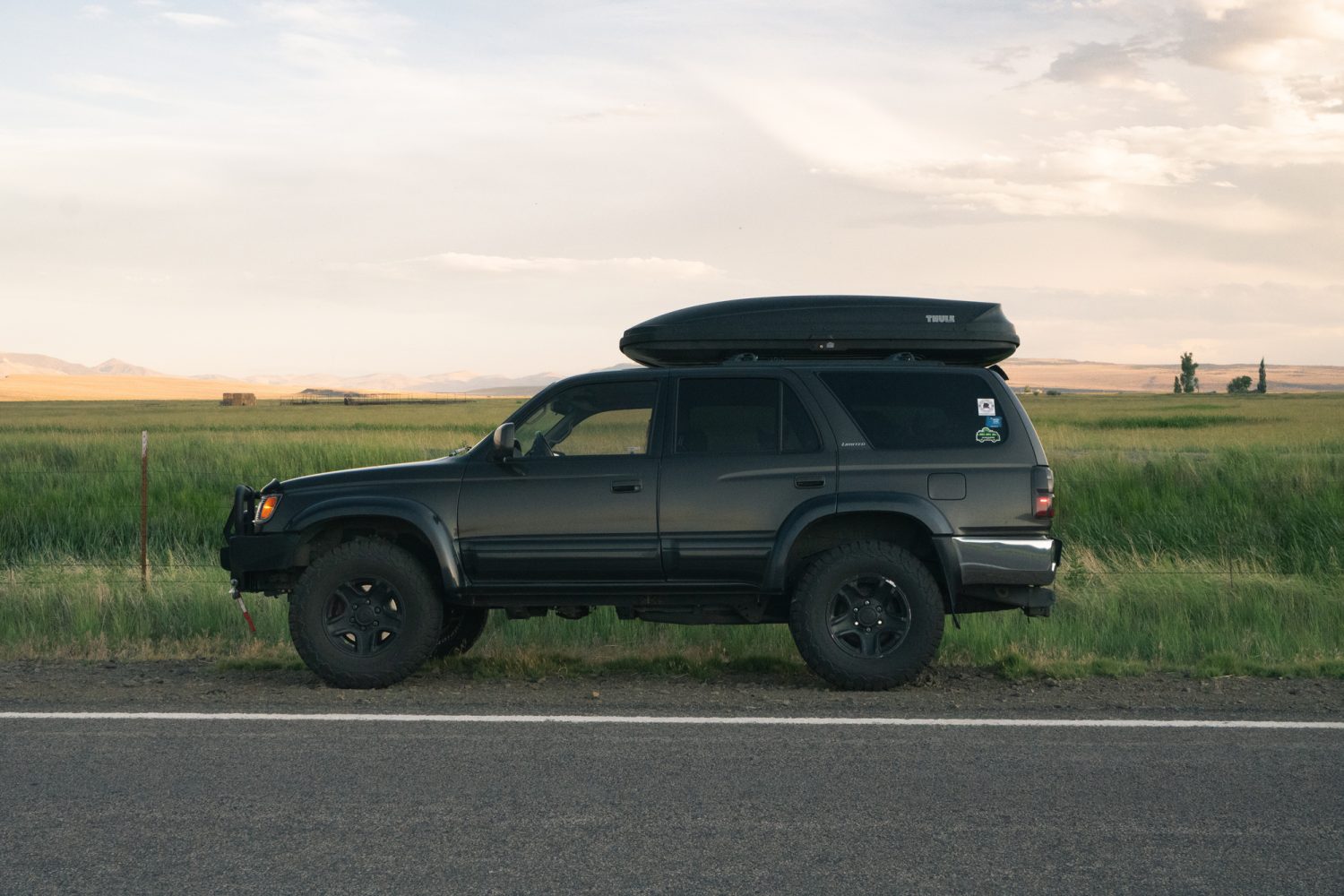People don’t generally ask what noise levels are like while driving the Troopy; it gets overshadowed by just about everything else. Pop-tops and engines make for far better conversations than how many millimeters of acoustic insulation cover our floor pan. After 11 months of traveling in the Troopy, though, we can say with certainty that noise levels are one of its weakest areas. But this is the nature of all vehicles: compromise must be made in one area to excel in another. This weekend, we had the opportunity to get our 3rd Gen 4Runner on its first trip since buying the Land Cruiser.



It was a chance for a direct comparison between noise levels in both of our 4x4s. We would travel on many of the routes and trails we have been using for the previous two years. Southeast Oregon and Northwest Nevada have long been our go-to location for escaping the crowds. With the excitement of purchasing the Troop Carrier having worn off ever-so-slightly, Olivia and I found ourselves wondering what steps we could take to improve the driving experience of the vehicle.


There are a number of factors contributing to the excessive noise levels in the Troopy, but the leading culprits are the engine, suspension, door/window seals, and the sheer size of the cargo area. The diesel engine and parabolic suspension combine for a deafening experience when driving for multiple hours. Anytime we go above 40 mph, the engine noise renders the cab nearly incapable of allowing conversation. The lack of A/C leads to a continuous flow of white noise in the summer when it is a necessity to have the windows open. It doesn’t get much better off-road either. The overkill heavy-duty suspension creaks and jars as it articulates over rough terrain and reverberates through the cavernous cargo area. After a while, you get used to the level of noise, but the 4Runner reacquainted us with the wonders of adequate acoustic insulation.

The difference in engine idle noise levels between the Land Cruiser’s 12H-T and the 4Runner’s 5VZ-FE engine is a dead giveaway that the 3rd Gen will be a more comfortable ride. Still, the insufficient firewall insulation in the Land Cruiser exacerbates the issue. The 4Runner is from 1997, 12 years newer than the Troopy, meaning the door and window seals are tighter and catch less wind. Insulation from road noise has also become a priority for engineers as comfort has received more focus from drivers. The market for each rig needs to be taken into account since they were targeted at vastly different consumers. One is a utilitarian workhorse, the other a luxurious yet capable 4×4. The utilitarian nature of the 70 Series is what adds much of the greatness to our HJ75, but that doesn’t mean our comfort has to live 35 years in the past.



Spending the weekend in our 1997 4Runner has shown us what 12 years of advancement can do for vehicle comfort. Driving in the 3rd Gen is absolutely peaceful. Conversations are had in casual voices. The radio doesn’t need to be at ear-piercing levels, and we are able to easily enjoy our thoughts while driving in relative silence. What the 3rd Gen provides on the road, however, is overshadowed by its clumsiness in camp. The lack of space requires gear to be continuously shifted around. To make our bed, items in the cargo area must be moved to the front seats or stacked outside. After a day of long miles on dusty roads, the ability to quickly set up camp and have a beer is difficult to overvalue.



The Troop Carrier has never been known as a comfortable vehicle to drive, and we knew that before purchasing it. Despite that knowledge, we opted to hold off on large modifications. Firstly, because every spare dollar Olivia and I had was used to pay our vehicle loan off as soon as possible, but also because we wanted to understand the Troopy as it was. Taking our time to learn the platform has given us a clarity that can’t be attained in any other way than patience. Knowing that we love it regardless of what future modifications we make provides peace of mind in the sustainability of driving the Troopy.

We have a long list of modifications we intend on making, ranging from sound-deadening materials to a lighter-duty suspension. A clear path for where to compromise and where to splurge is apparent to us. Reducing driver fatigue while maintaining off-road capability and camp ergonomics will be a fine line to walk, but few vehicles lend themselves to modification so well. As for our first step, we know that adequate acoustic insulation will be the base upon which we build the vehicle and will set the tone for the overall level of comfort we are able to achieve.


